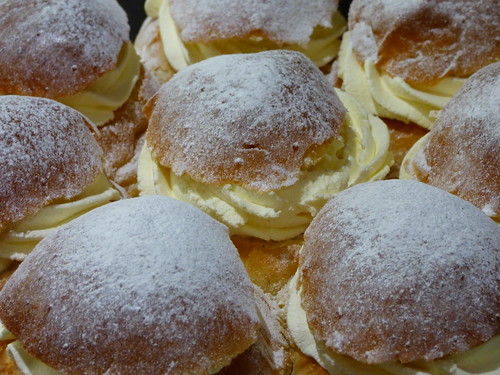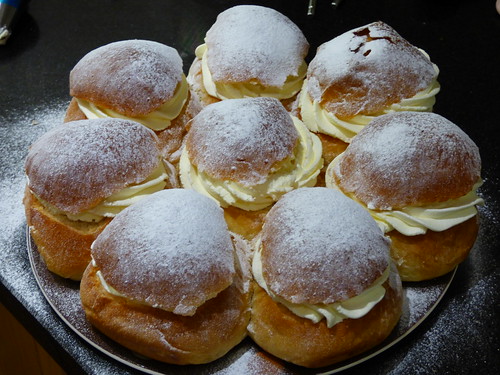
Sprucing up boiled potatoes is not something I've thought about in the past, I like potatoes, so it's never been an issue. However, you can always tell the difference between freshly boiled potatoes and ones that have been reheated, so sprucing them up a little makes sense and is quite a good idea, I think. For example the dillstuvad potatis I made a couple of years ago, would work very nicely. Another way is to just fry them in a little butter to heat them through, which is what my Mum does (not that I can remember though). A third alternative is something I came across a few days ago and decided to try out straight away - Bombay Potatoes from the BBC website.
Ingredients
4 tbsp grapeseed oil
¼ tsp mustard seeds
¼ tsp of chilli powder
¼ tsp ground turmeric
350 g boiled and diced potatoes
Salt to taste
Method
- Heat the oil in a deep pan on medium heat and have a lid ready.
- Drop a mustard seed into the oil, when it pops, the oil is hot enough, so add the mustard seeds, quickly put the lid on and give the pan a shake.
- Once the mustard seeds have popped, add the chilli powder and turmeric and stir vigorously for a minute.
- Add the potatoes and stir to coat them with the spices and they start browning around the edges - about 4 minutes.
- Turn the heat to low, cover the pan and leave to cook for a further 5 minutes.
- Serve immediately.
As it was St Valentine's Day, we had these lovely potatoes with foil baked salmon, which this time was sprinkled with two different herb mixtures for fish and steamed broccoli. Very yummy!
A note about putting mustard seeds in hot oil - in the original recipe it says "pop", but what you actually get is "jump out of the pan and all over the kitchen", this is why I recommend putting a lid in immediately after adding them to the oil. So when I put my mustard seeds in, they all jumped out immediately and I had to try and catch them and put back in the ban again.
The fish herb mixtures are from the Krusmyntagården in Visby, Sweden, where we visited a few years ago and also took my parents and my sister last year. It's a really nice place, high up on the cliffs of Gotland, overlooking the sea, with a glitzy shop with all sorts herb and spice related articles, a lovely restaurant that does a great buffet lunch and a very pretty herb garden to wander around in and look at what different herbs look like. The first fish herb mixture I have contains dill, tarragon, lemon balm, thyme and coriander seeds. I'm not sure what the second one contains - definitely salt, but it's also ground finer, so it's hard to tell what's in it and they don't seem to have it on their website any more. I'm guessing oregano, basil and spearmint perhaps.




